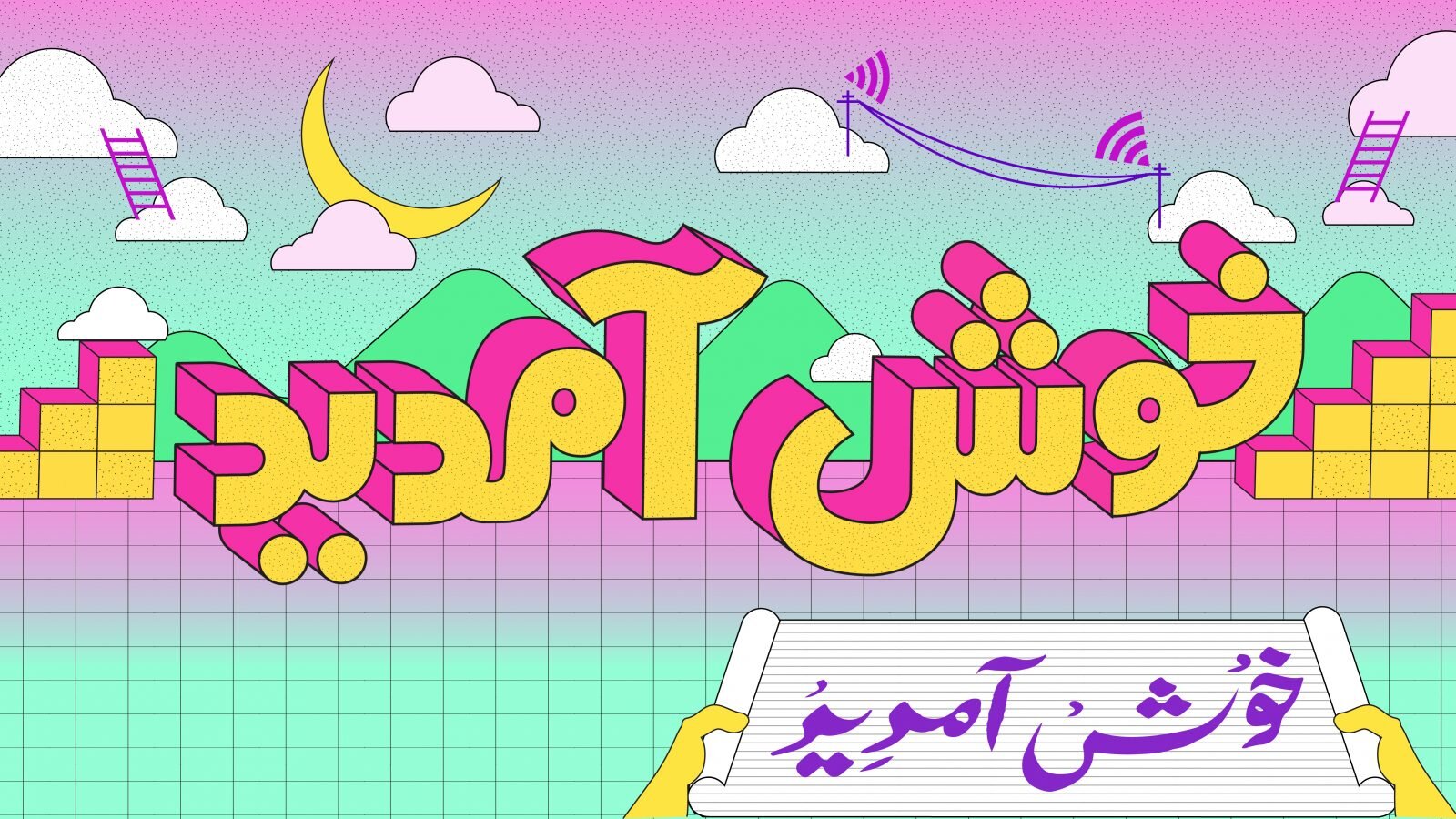HOW TO BRING A LANGUAGE TO THE FUTURE
Illustration by Muhaddisa Shahzad for RoW
For decades, it was nearly impossible to type in Urdu online. Meet the people fighting to digitally preserve its script.
By the time Mudassir Azeemi wrote to Apple CEO Tim Cook in 2014, he’d tried everything he could think of to make it easier to type in his native language, Urdu. In 2010, the now 42-year-old Pakistani-American developed a keyboard app you could use on iOS devices; within two years, it had been downloaded over 165,000 times. But even with an Urdu-language keyboard, the characters appeared on the screen in an entirely different font.
“Dear Mr Tim Cook,” he wrote. “Urdu language’s beauty lies in the typeface.”
Spoken by nearly 170 million people in South Asia and the South Asian diaspora, Urdu is written in an alphabet derived from Arabic. But while Arabic is written in a script called naskh, simpler and more linear in its appearance, many other people — including Iranians, Afghans, Pakistanis, Urdu-speakers in India, and Uighur-speakers in parts of China — employ an ornate style of writing that originated in 14th-century Persia called nastaʿlīq. When Azeemi sat down to write his letter to Cook, nastaʿlīq was almost nowhere to be found online. To communicate in Urdu, you either had to type in naskh or spell words phonetically in Latin script.
Azeemi, a software developer now working and living in Silicon Valley, grew up in Pakistan’s sprawling seaside city, Karachi. As a teenager during the days of dial-up, he once racked up an internet bill that cost half of his father’s monthly salary; in his early 20s, he learned to code on one of those old calculator-sized computers called palmtops. He didn’t give much thought to Urdu’s digital future until he moved to California and became a father. Watching his children learn English through songs on YouTube, he’d felt a pang of loss — the anxiety that they might never speak or appreciate Urdu the way he does. One of the earliest apps Azeemi developed, even before the keyboard, was for nursery rhymes in Urdu.
These early attempts at yanking Urdu on to the internet hadn’t been particularly profitable — Azeemi says he lost over $50,000 in the process. He remained determined. In 2013, Apple introduced an Urdu keyboard for iOS devices, but, much to the chagrin of Urdu users, the default font was still naskh, the Arabic font. In Azeemi’s eyes, the solution was now pretty straightforward: operating systems — Apple, Google, Microsoft, and others — had to be persuaded to adopt nastaʿlīq.
His open letter, addressed to Cook and Apple’s chief design officer at the time, Jonathan Ive, described the need for a nastaʿlīq font on iOS platforms. “The only hurdle for us is to bring the typeface that truly represent[s] the language,” wrote Azeemi. “And every language, when it is written, shines when using the typeface which it truly presented in the world.”
